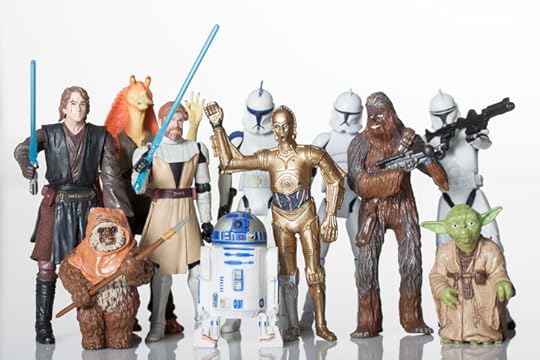Bathroom Readers' Institute's Blog, page 51
November 3, 2017
Happy World Sandwich Day!

There’s a “holiday” for anything and everything anymore, but the humble and wonderful sandwich is truly deserving of its own day. Here are some origins of some legendary ‘wiches.
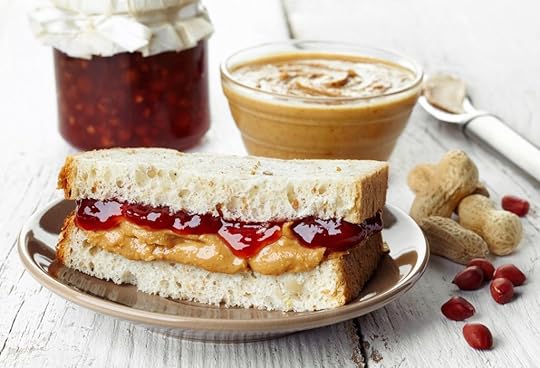
Elvis Sandwich
One of those pieces of trivia everybody seems to know regards Elvis Presley’s affinity for peanut butter sandwiches. As a kid, he liked peanut butter, banana, and honey sandwiches. As an internationally famous rock n’ roll star, he preferred gigantic peanut butter, jelly, and bacon sandwiches. In 1976 — about a year before he died — the King dined at the Colorado Mine Company in Denver and challenged himself to the restaurant’s specialty: the Fool’s Gold Loaf. At a cost of $50 (about $200 in today’s money), Elvis dined on an entire loaf of Italian bread hollowed out and filled with about a pound each of peanut butter, grape jelly, and bacon.
PB&J
The lunchbox favorite is so simple — bread, and two pantry staples — that it’s hard to believe anybody ever had to invent the American classic. In the early 20th century, the thing that even the most finicky kid will eat was something of a fancy food. Peanut butter was brand new, and considered a delicacy, and lots of upscale restaurants and tea rooms on the East Coast served peanut butter sandwiches, paired with everything from pimento cheese to, of course, jelly. It became a quick, cheap, easy, and populist food in the 1930s…with the invention and distribution of pre-sliced packaged bread.
The Philly Cheesesteak
It’s one of the famous things to ever come out of Philadelphia, the “city of brotherly love,” if not one of the most famous sandwiches in America: it’s thinly-sliced beef, cheese (or Cheez Whiz), and maybe some onions, on a long roll. Who actually invented it is somewhat controversial. The official creator of the Philly Cheesesteak , according to the city of Philadelphia, is a hot dog vendor named Pat Olivieri. He worked Philadelphia’s south side, and one day in the 1930s expanded his menu by offering beef sandwiches on Italian rolls. The sandwich caught on with cab drivers and became so popular that Olivieri soon opened a restaurant, Pat’s King of Steaks. The joint’s manager, Joe Lorenza, added the cheese. The restaurant was highly successful and spawned many imitators. Another steak sandwich place called Geno’s claims to have been the first to think of putting cheese sauce on the sandwiches.
The post Happy World Sandwich Day! appeared first on Trivia Books and Facts | Uncle John's Bathroom Reader.
November 1, 2017
Know Your Rights!

Artists create things all the time. Here are some creators of well-known things who knew how to make a product people would love…but more about the business side than the people who negotiated their contracts. In short: They held on to the rights to something that only they knew would be worth a lot of money someday.
Toy Rights
After the huge commercial success of his 1973 film American Graffiti, George Lucas negotiated with Twentieth Century Fox to make his next movie, an ambitious “space western” called Star Wars. Science-fiction movies were a hard sell at the time, so Fox initially gave Lucas a relatively small budget of $8.25 million. To help keep costs down, Lucas offered to cut his director’s fee from $500,000 to $150,000…in exchange for the merchandising rights to Star Wars. Fox thought Lucas was doing them a favor, taking less money and all, and because movie tie-in merchandise wasn’t the billion-dollar industry it is today. And it’s a massive source of revenue today mainly because of Star Wars. It was the first movie to really make a truckload of money outside of the box office. In the year after Star Wars was released, about $100 million worth of Luke Skywalker action figures and toy Millennium Falcons, for example, were sold. Overall, Star Wars has moved $12 billion in merchandise. Overall value of Lucas taking a cut of the merchandise instead of a bigger director’s fee: about $3.5 billion.
Rerun Rights
In the early days of television, shows were mostly broadcast live, or recorded via primitive, not-long-lasting “kinescope” technology. In 1951, I Love Lucy costar and producer Desi Arnaz proposed to CBS that his show be recorded on 35 millimeter film. CBS said no at first, because they didn’t want to spend an extra $3,000 per episode (about $29,000 in today’s money, adjusted for inflation) on something that would only air once—theorizing that nobody would want to re-watch something they’d already seen. Arnaz helpfully offered to pay for the cost of the film, provided he then owned the films. CBS agreed. What did Arnaz do? He basically invented the incredibly lucrative concept of the TV rerun, while also owning all of the episodes one of the most popular—and re-run—TV shows ever.
Internet Rights
South Park hit TV in 1997—and it’s still running on Comedy Central today. In the early 2000s, creators Trey Parker and Matt Stone were renegotiating their contract with Comedy Central to keep the show going, discussing things like number of episodes and how much they’d get paid for things like DVD sales and South Park T-shirts. It’s not surprising that the cunning satirists seemed to know where the culture was headed before their corporate bosses did—which is why they asked to keep the “online rights” to South Park. Comedy Central allowed them to keep those, because in the early 2000s, there wasn’t much of an online marketplace for TV. But in the decade-plus since, streaming content has become big business, what with Netflix, Hulu, Amazon, and other sources for entertainment. Result: Parker and Stone had free reign not only to post South Park episodes on their own website, but they could negotiate with services to play South Park, entitling them to a much bigger cut of the profits than if Comedy Central alone had gotten them.
The post Know Your Rights! appeared first on Trivia Books and Facts | Uncle John's Bathroom Reader.
October 30, 2017
Why Do Ghosts Say Boo?

When out and about dealing with spooky ghosts this Halloween, you ’ ll likely hear a boo or two. Here ’ s why those spirits and sprites do boo they way they do.
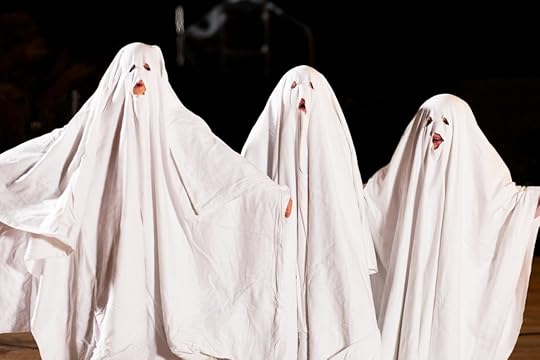
Full disclosure: None of us here at Bathroom Reader HQ have actually seen a ghost…let alone hear one. But in old books, movies, and TV shows, they always seem to state, shout, or wail some form of the word “boo!” It’s pretty scary to hear, even secondhand, but is it frightening because a ghost is saying it, or do ghosts say it because it’s frightening? Probably a little bit of both.
The modern ghost noise of boo can be traced back to a 16th century English short story called “Smyth Whych that Forged Hym a New Dame.” In that piece, a character uses “bo!” as a hypothetical scary noise (“Speke now, let me se, and say ones bo!”) Over time, that bo evolved into boh, and headed over to Scotland. By the early 18th century, “boh” was a word used to silence ornery and obnoxious children. Linguistically, it’s a good choice: the “b” is crisp and sudden, the “ooo” is ominous and threatening. By the 1820s in Scotland, boh, and then “boo” became a thing costumed kids shouted at each other during Halloween-like predecessors.
But “boo” wasn’t born in a vacuum (which, as we all know from Ghostbusters, actually suck ghosts in, rather than spit them out). As English is a fairly modern language, many of our words can be traced back to ancient Latin and Greek terms. Such is the case for boo. There’s a Latin word boare, and a frighteningly similar Greek word boaein. Both words mean “to cry out” or “shout.” Amusingly, this means that when a ghost is trying to be all spooky and scary by yelling out “boo,” it is literally and actually saying “I am yelling.” Which isn’t so scary.
Interestingly, other languages have their own unique and old variations on what they think ghosts say. For example, if you were to encounter a French ghost, it might say “hou.” A Spanish ghost would try to scare you by wailing “uuh.”
The post Why Do Ghosts Say Boo? appeared first on Trivia Books and Facts | Uncle John's Bathroom Reader.
Weird News from Above

When you think about it, it’s kind of weird and amazing that humans have created machines that allow us to travel through the sky and into space. It makes sense then that there are going to be some weird stories about what happens when humans take to the skies.
THE SKY KING
The U.K.’s Prince Philip, the recently retired consort of Queen Elizabeth, was an aviator for decades. He served with the Royal Air Force in 1953, and thereafter logged almost 6,000 hours over the next 44 years, when he retired from the pursuit. He’s not the only airborne royal. King Willem-Alexander ascended to the throne of the Netherlands in 2013. He served with the country’s air force more than 20 years ago, and then obtained his pilot’s license. Even after he became king, he continued to use that license. When he’s not doing his kingly duties, Willem-Alexander has apparently been working as a part-time pilot for the KLM Royal Dutch Airlines. That’s a regular commercial airline. He’s been on the books as a co-pilot with the company since 1996, manning the cockpit about twice a month. Before increased airplane security in recent years, the cockpit doors were generally left open, but the king says he was rarely recognized. Nor was he when he said his name during flight announcements.
NEED SOME SPACE?
Elysium Space is a “memorial spaceflight” company founded by a team of ex-NASA personnel and funeral industry veterans. Its mission statement is to “change the vision of death from the underground to the celestial.” To that end, Elysium Space has contracted with SpaceX, the private spaceflight company founded by Elon Musk of Tesla Motors. Whenever SpaceX launches its Falcon 9 rocket into space from Vandenberg Air Base in California, it will carry with it a capsule containing the cremated remains of Elysium Space’s departed customers. Once in orbit, the capsule will detach, orbit the Earth for two years, and then re-enter the atmosphere where it will burn up as it descends, an act Elysium compares to “a shooting star.” So far, 100 people have arranged to have their ashes shipped to Elysium. The cost: $2,490—which isn’t much, considering the average funeral costs more than $10,000. (Book passage before it’s too late—or really too late.)
DON’T DRINK THE WATER
Air travel is very tiring, particularly a long or red-eye flight. But, hey, the flight attendants offer coffee throughout the trip, so why not have a cup or two, right? Maybe stay away from the java. Coffee is made with water of course, but planes don’t exactly have a fresh supply of water available when it’s time to brew a pot. Every plane has a small tank of “potable water.” That’s water that’s clean enough for handwashing and for use in hot beverages, such as in the brewing of coffee. And one person’s definition of “clean enough” varies from another’s, because according to a recent Environmental Protection Agency report, 12 percent of airplane water tested has coliform bacteria present, a nasty bug on its own, but which is also found in tandem with the potentially deadly E. coli. It’s probably because while those tanks are refilled on the ground, they’re likely only thoroughly cleaned once or twice a year.
The post Weird News from Above appeared first on Trivia Books and Facts | Uncle John's Bathroom Reader.
October 27, 2017
Halloween Around the World

Here in the U.S., we dress up in costumes, beg for candy from our neighbors, and listen to “Monster Mash.” Here’s how the most spooktacular of holidays is celebrated around the globe.

Great Britain
The tradition of carving jack-o-lanterns came to America with immigrants from the British Isles. For as long as anyone can remember, they were carved out of pumpkins, because that’s a common large vegetable in the Americas. Pumpkins have become increasingly prominent in England and Scotland, but lots of people there still make their jack-o-lanterns out of the vegetables people used hundreds of years ago: turnips and beets.
Ireland
A lot of the ways that Halloween is celebrated come from the ancient Irish observance of Samhain. Some of those traditions remain intact on the Emerald Isle. One of them is preparing and eating a barmbrack. It’s a fruitcake stuffed with tiny, wrapped treats. What you get in your slice foretells your fate for the coming months. A ring means you’ll find love; a coin means you’ll come into some money.
Austria
A common thread of Halloween is an interest and respect for the dead. In Austria, people “commune” with deceased souls by leaving bread and water out all night, along with keeping the lights on all night. These gestures welcome the dead back to the Earth during the one time of year they’re allowed to visit the realm of the living.
The Philippines
Traditionally, kids partake in an activity called Pangangaluluwa. It’s similar to trick-or-treating, but a bit more spiritual and solemn. They go door-to-door in costume and they sing and ask for prayers for dead loved ones they believe to be in Purgatory.
The American Midwest
In most of the United States, costumed, candy-seeking kids walk up to doors and say, “Trick or treat.” They get a piece of candy or two, and they’re on their way. But specific to Des Moines, Iowa, the transaction goes a little bit differently. Kids may say, “tricks for treats.” Then they must tell a bad joke…and only then do they get that sweet candy.
The post Halloween Around the World appeared first on Trivia Books and Facts | Uncle John's Bathroom Reader.
October 26, 2017
The One-Hit Wonders of the World Series

Millions have fantasized about being the hero of the World Series, like stepping up to the plate and hitting a home run. Here are some players who did just that—even though the rest of their professional baseball careers were otherwise unremarkable.

• The 2016 World Series will go down in history as the one that broke the Chicago Cubs’ century-long championship drought. The team they faced: the Cleveland Indians, who inherited the Cubs’ status as team that’s gone the longest without a World Series win. But after Game 1 of the 2016 World Series, it looked like it might be Cleveland’s year. They beat the Cubs 2-0, with all points coming from two solo home runs by catcher Roberto Pérez. He came through when it mattered, because In 184 at-bats in the regular season, Pérez hit a dismal .183.
• Rick Dempsey was never a star. Literally—the catcher played 24 seasons in the Major Leagues and was never named an All-Star, on account of his lifetime .233 average. The 1983 season was an average one for Dempsey—he hit .231 for the Baltimore Orioles, which includes 16 doubles and four home runs. His team made it all the way to the World Series, however, which is when Dempsey shined brightly—he hit .385 in the October Classic, matching his season total of doubles (four), and hitting a home run. The Orioles won it all, and Dempsey was named World Series MVP.
• Gene Tenace wasn’t even a full-time player for the 1972 Oakland Athletics. He played in about half of the team’s regular season games, amassing a not-that-impressive 51 hits and .225 batting average. In the American League Championship Series against Detroit, Tenace did even worse, snagging just one hit in 17 at-bats (an average of .059). He came out of nowhere to lead the team to a championship. Tenace batted at .348 with four home runs—and was the World Series MVP.
• Billy Hatcher was a journeyman outfielder who played for seven teams in 12 seasons (1984–1995). His best season came for Houston in 1987—he had a 16-game hitting streak, stole 53 bases, and hit .296. (He was also suspended 10 games after he was caught illegally corking his bat.) Hatcher’s overall best moment definitely came in the 1990 World Series. With the Oakland Athletics widely expected to cruise to a victory, the Cincinnati Reds swept the series in four games—in large part thanks to Hatcher. He racked up an average of .750—a World Series record. He also set records for most doubles in a four-game sweep (four) and consecutive hits (seven).
The post The One-Hit Wonders of the World Series appeared first on Trivia Books and Facts | Uncle John's Bathroom Reader.
Destroy My Work When I’m Gone!

Uncle John would never destroy his own work—he just couldn’t do that to all those poor little fun facts. Maybe it’s just different with fiction, because these authors didn’t want their unfinished work released after their deaths, and they went to great lengths to make sure their wishes were honored.
Edward Albee
Acclaimed American playwright Edward Albee died in 2016. Long before he died, the writer, who won three Pulitzer Prizes for his work, filed a will requesting “dead hand control”—a legal term that means he gets to say what happens to his work after he dies. For Albee, that includes specific instructions for how to produce already published work, and it also meant that he wanted all of his papers, including any plays he hadn’t quite finished, thoroughly destroyed.
Terry Pratchett
British author Terry Pratchett wrote some of the most popular (and funny) fantasy books ever published, such as Good Omens and the Discworld series. After a years-long struggle with Alzheimer’s disease, he passed away in March 2015. Fellow literary icon Neil Gaiman—who wrote Good Omens with Pratchett—announced thereafter that Pratchett had told him he wanted the computers that held whatever books he was working on when he passed away to be run over by a steamroller. In August 2017, Pratchett estate manager Rob Wilkins made good on the wish—he took the hard drive out of Pratchett’s computer and flattened it with a steamroller.
Franz Kafka
Franz Kafka is best known for darkly haunting psychological works like The Trial and “The Metamorphosis.” He wrote an untold amount of material…because he burned most of his own works when he didn’t think it was very good. As he succumbed to tuberculosis in the early 1920s, dying in 1924, he asked his friend Max Brod to be his literary executor. The main detail of the job was to round up any unfinished works Kafka left behind and destroy them. Brod didn’t agree with Kafka’s assessment or plans. He saved his friend’s stuff and got those works published, preserving Kafka’s literary legacy.
Vladimir Nabokov
Vladimir Nabokov contributed a few classics to literature, such as Lolita and Pale Fire. When he died in 1977, he left behind parts of a novel he intended to call The Original of Laura. He’d asked his wife, Vera, to destroy it upon his death, but she couldn’t bring herself to do it. When she died in 1997, The Original of Laura, still intact, passed on to Nabokov’s son, Dmitri. He, too, couldn’t bear to burn or shred the manuscript. It took him until 2008 to decide what to do: He denied his father’s request and published the book.
The post Destroy My Work When I’m Gone! appeared first on Trivia Books and Facts | Uncle John's Bathroom Reader.
October 25, 2017
Fast Food Firsts

Here’s to the pioneers behind some of the biggest innovations in American history: the people who made fast food what it is.
First fast food restaurant
The first to offer quick food on the go: A&W. Beginning in 1919 they served their draft root beer at a walk-up stand in Sacramento, California, and soon began selling hot dogs, burgers, and fries, too. Around the same time, in the Midwest, White Castle started selling its signature tiny hamburgers.
First kids’ meal
In 1973, now-defunct chain Burger Chef introduced the Funmeal. It combined child-size portions of a burger, fries, and a drink with a free toy. McDonald’s followed with the Happy Meal five years later.
First combo meal
The combo meal allows customers to easily order a burger, fries, and a soda—it’s like a kids’ meal for grownups, without the toy prize. Generally offered a little cheaper than ordering each item individually, Burger Chef came up with the idea in the late 1950s.
First fast food breakfast
In 1972, McDonald’s started opening at dawn to offer pancake platters and a burger made of breakfast foods called the Egg McMuffin. It was invented by a couple of California franchisees who turned the essentials of Eggs Benedict—English muffin, eggs, ham—into a sandwich.
First chicken sandwich
It seems like a no-brainer now, taking chicken off the bone and molding it into a patty and serving it on a hamburger bun. The first company to actually do it: chicken-centric Chick-fil-A. In 1964 they put a breaded and fried chicken fillet (a “chick-fil-A,” really) on a bun.
First drive-thru window
Today, most fast food places offer two options: go inside and eat, or drive by the side of the building and get food handed to you through a window. Before drive-thrus, there were drive-ins—customers would park their cars, order some food, and hang out for a while. The first place to install a service window was Red’s Giant Hamburg in Springfield, Missouri, in 1948. A year later, In-N-Out introduced the concept in California.
First fast food salad
Wendy’s pioneered the idea of “healthy” fast food, offering things like baked potatoes and chili in addition to the usual burgers and fries. In 1979, the chain became the first fast food restaurant to offer green vegetables: They installed salad bars.
The post Fast Food Firsts appeared first on Trivia Books and Facts | Uncle John's Bathroom Reader.
October 24, 2017
Ask Uncle John Anything: The White Glove Test
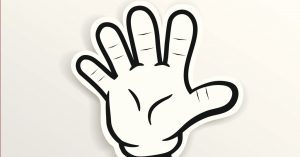
Uncle John knows pretty much everything—and if he doesn ’ t, he puts one of his many associates on the case. So go ahead, in the comments below the article, ask away.
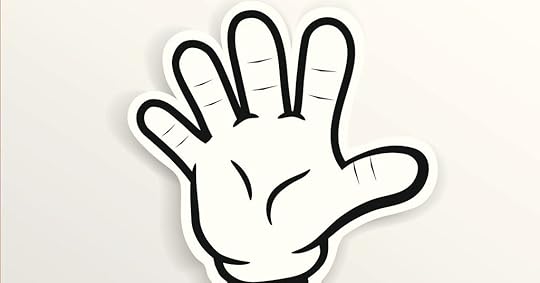
Why do so many cartoon characters wear white gloves?
Some things about cartoon characters just don’t make sense. Okay, beyond the fact that mice, rabbits, and other characters walk around on two legs, converse in English, and wear pants—unlike their real-world, animal kingdom counterparts. We’re talking about those omnipresent white gloves. Whether they’re old Disney favorites, Looney Tunes characters, or of some other origin, all of those animated animals seem to wear white gloves.
It all started back in the 1920s and 1930s. Like almost all films of the time period, cartoons were produced in glorious black-and-white. That made for some visibility issues. If the backgrounds were black, white, and grey, and the characters were black, white, and grey, it was hard to tell what the moving ‘toons were doing, particularly what they were doing with their hands. White tends to “pop” against a darker background, so white gloves were used to that effect. It made the hands more noticeable—a little too noticeable, but early animators had to do what they had to do.
Another functional reason for the gloves is that they’re less complicated than hands. Poofy gloves aren’t just easier to draw than hands, they’re easier to animate. Be it hand drawn, computer-aided, or other styles, animation is extremely work-intensive, and animators can save a lot of labor, money, and time not having to worry about the intricate details of hands, like fingernails, hair, and knuckles in frame after frame after frame.
Gloves also aid in characterization. In the 1968 documentary The Disney Vision, Walt Disney himself says he consciously put gloves on Mickey Mouse. It anthropomorphized him. “He was supposed to be more human,” Disney said. “So we gave him gloves,” as opposed to little mouse hands.
The post Ask Uncle John Anything: The White Glove Test appeared first on Trivia Books and Facts | Uncle John's Bathroom Reader.
October 3, 2017
What a Heartbreaker

A few stories about the late, legendary Tom Petty.

Tom Petty and the Heartbreakers’ breakthrough hit was the classic “American Girl.” While mixing the final cut in a studio late one night in 1976, Petty thought it was missing something and asked guitarist Dwight Twilley what he thought. Twilley said the song was good, but that the epic, song-ending guitar riff by Mike Campbell should be used throughout the song, not just at the end. That was the solution to fix the song. So Petty called the band back to the studio — in the middle of the night — to completely re-record “American Girl.”
In addition to churning out hits, Petty did a little acting. He co-starred in the Kevin Costner movie The Postman as the mayor of a post-apocalyptic city. His character was said to be famous before the end of the world, implying that the character actually is Tom Petty. A couple of decades earlier, Petty was offered the chance to star in a classic rock movie, but he turned it down. Rock n’ Roll High School wound up being a film about Ramones-obsessed teenagers, but the movie was first offered to Todd Rundgren, Cheap Trick, Tom Petty & the Heartbreakers, Van Halen, and Devo.
Tom Petty and the Heartbreakers had a huge hit in 1981 with “Stop Draggin’ My Heart Around,” a collaboration with Stevie Nicks. Nicks also inspired a different Heartbreakers song. Petty went to a party at Nicks’ house in 1985, and to avoid the debauchery, Petty went to sleep in an empty room. In the morning, he awoke to Nicks standing at the foot of his bed, twirling in a Victorian dress. Suddenly, Nicks’ ex-boyfriend, Eagles guitar Joe Walsh, entered the room, and Nicks shouted, “Don’t come around here no more!” That inspired Petty to write “Don’t Come Around Here No More.”
Petty’s other major role: voicing the character of Lucky on the last few seasons of King of the Hill. Writer John Altschuler created the character, so-named because he won a big settlement after he slipped in a pool of urine at a Costco. When describing what the hard-living character should look like to the show’s other writers, Altschuler said he resembled “Tom Petty without the success.” That emboldened the show to pursue the real Petty to voice the character. The rock star enthusiastically signed on, and he did such a good job that the intended one-time role became a regular one.
Petty was a part of the 1980s supergroup the Traveling Wilburys; he performed under the alias “Charlie T. Wilbury, Jr.” Petty was the youngest member of the group, which included ‘50s and ‘60s legends like Roy Orbison, Bob Dylan, and George Harrison. And the whole thing came together because of a guitar at Petty’s house. In 1988, Harrison was in Los Angeles to record a B-side for a single off of his latest album, and contacted that album’s producer, Jeff Lynne of the Electric Light Orchestra. Lynne was working with Orbison, and he wanted to play on the song, but Harrison couldn’t record it without a certain guitar, which Petty was borrowing. The group picked up the guitar and Petty and wound up recording a whole album (not just a single) at Dylan’s home studio.
The post What a Heartbreaker appeared first on Trivia Books and Facts | Uncle John's Bathroom Reader.

